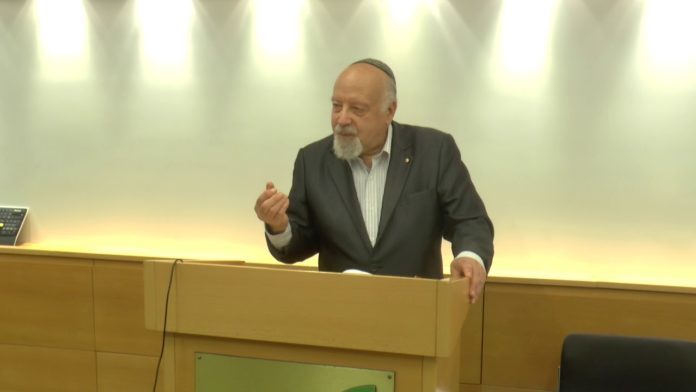
B’RACHAH OR KIDDUSH?
Q. In South Africa the refreshments after a Shabbat service are called a “b’rachah”. Elsewhere it is a “kiddush”. Which one is right?
A. It is all very confusing, very interesting and very wonderful to see how the other half lives.
Many communities have their own way of saying things.
Anglo-Jewry says, “I wish you long life” on a bereavement or Yahrzeit and “Well over the fast” before Yom Kippur, whilst other places find these formulae rather strange.
South African Jews call a “challah” a “kitke” (no-one seems certain why), but since the word “challah” originally did not mean a loaf of bread at all, but rather the priest’s share of the dough, it may be that “challah” is also not 100 percent correct.
In Germany the loaf was called “baerches”, probably a corruption of “b’rochos”.
To call a “kiddush” a “b’rachah” may possibly have a Lithuanian origin; but since “kiddush” means “sanctification” and “b’rachah” means “blessing” there is logic behind both names.
POINTING TO THE TORAH
Q. Why do some people point with their little (“pinkie”) finger when the Torah is raised?
A. It was originally a Sephardi custom.
When the Torah scroll was lifted up, many people would piously raise the corner of their tzitzit as they proclaimed “V’zot HaTorah”, “And this is the Torah…” (Deut. 4:44). They would then kiss the tzitzit.
There are several variations of the custom. Some raise both hands to the Torah. Others raise one finger.
In some places it is a women’s custom. In others it is carried out by men.
Raising one finger is linked with the idea of the Torah pointer, the “yad”, which has an extended finger indicating the place in the scroll.
GREENERY ON SHAVU’OT
Q. Why do we have flowers and greenery in the synagogue on Shavu’ot?
A. One view is that it recalls Mount Sinai, a little, nondescript mountain which was so excited at being chosen for the giving of the Torah that it sprouted greenery.
Likewise, in every generation the synagogue and the Jewish people are proud and excited to be receiving the Torah anew.
(Note that the Gerer Rebbe points out that Shavu’ot is not called the Time of the Receiving of the Torah, but the Time of the Giving of the Torah; the Torah was given once, but it is up to us to receive it in every generation of history.)
Another opinion says that this is the time of year when God judges the world in relation to the fruit of the trees (Rosh HaShanah 16a), and the custom, therefore, reminds us of our dependence on the Divine bounty.
The Vilna Gaon opposed the custom as an imitation of non-Jewish usage (Christians bring flowers and greenery into churches), but other authorities disagree and say that the Jewish custom is older and has its own logic.
By Rabbi Dr Raymond Apple
Rabbi Raymond Apple was for many years Australia’s highest profile rabbi and the leading spokesman on Jewish religious issues. After serving congregations in London, Rabbi Apple was chief minister of the Great Synagogue, Sydney, for 32 years. He also held many public roles, particularly in the fields of chaplaincy, interfaith dialogue and Freemasonry, and is the recipient of several national and civic honours. Now retired, he lives in Jerusalem and blogs at http://www.oztorah.com









